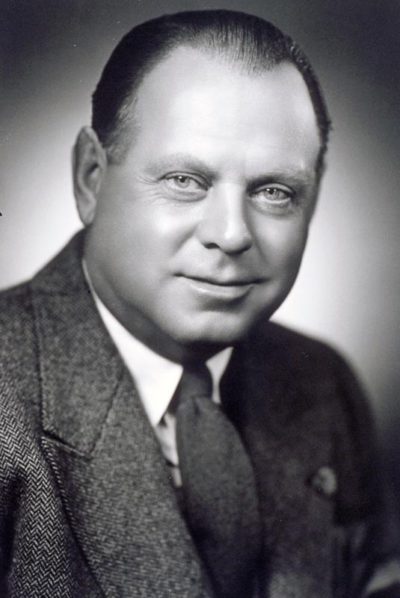Harley Earl (Harley Earl)

Harley Earl was born in Hollywood, California. His father, J. W. Earl, began work as a coachbuilder in 1889. The senior Earl eventually changed his practice from horse-drawn vehicles to custom bodies and customized parts and accessories for automobiles, founding Earl Automobile Works in 1908. Earl began studies at Stanford University, but left prematurely to work with, and learn from, his father at Earl Automotive Works. By this time, the shop was building custom bodies for Hollywood movie stars, including Roscoe “Fatty” Arbuckle and Tom Mix. Earl Automotive Works was bought by Cadillac dealer Don Lee, who kept Harley Earl as director of its custom body shop. Lawrence P. Fisher, general manager of the Cadillac division, was visiting Cadillac dealers and distributors around the country, including Lee. Fisher met Earl at Lee’s dealership and observed him at work. Fisher, whose automotive career began with coachbuilder Fisher Body, was impressed with Earl’s designs and methods, including the use of modeling clay to develop the forms of his designs. Fisher commissioned Earl to design the 1927 LaSalle for Cadillac’s companion marque. The success of the LaSalle convinced General Motors president Alfred P. Sloan to create the Art and Color Section of General Motors, and to name Earl as its first director. Prior to the establishment of the Art and Color Section, American automobile manufacturers did not assign any great importance to the appearance of automobile bodies. Volume manufacturers built bodies designed by engineers guided only by functionality and cost. Many luxury-car manufacturers, including GM, did not make bodies at all, opting instead to ship chassis assemblies to a coachbuilder of the buyer’s choice.
The executives at General Motors at the time, including engineers, division heads, and sales executives, viewed Earl’s conceptual ideas as flamboyant and unfounded. Earl struggled to legitimize his design approach against the tradition- and production-oriented executives. As head of the newly formed Art and Color Section in 1927, he was initially referred to as one of the “pretty picture boys”, and his Design Studio as being the “Beauty Parlor”. In 1937, the Art and Color Section was renamed the Styling Section. Sloan eventually promoted Earl all the way to the vice president level, making him (to Sloan’s knowledge) the first styling person to be a VP at a large corporation. Harley Earl and Alfred P. Sloan implemented “Dynamic Obsolescence” (essentially synonymous with planned obsolescence) and the “Annual Model Change” (tying model identity to a specific year) to further position design as an engine for the company’s product success. These ideas are largely taken for granted today but were unusual at the time. Earl’s Buick Y-Job was the first concept car. He started “Project Opel”, which eventually became the Chevrolet Corvette, and he authorized the introduction of the tailfin to automotive styling. During World War II, he was an active contributor to the Allies’ research and development program in advancing the effectiveness of camouflage. Harley Earl suffered a stroke and died in West Palm Beach, Florida, on April 10, 1969. He was 75 years old.
Born
- November, 22, 1893
- USA
- Hollywood, California
Died
- April, 10, 1969
- USA
- West Palm Beach, Florida
Cause of Death
- stroke
Other
- Cremated


